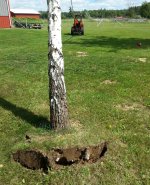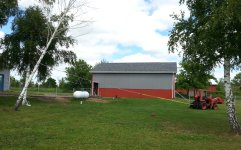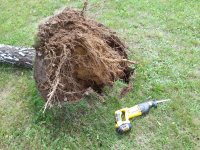chopped
Veteran Member
Hello all,
I know there will be many opinions on how im doing this but ill try to lay out what Im doing and the question I have.
The tree in question is a beech tree. about 11 inches in diameter. I will be using two cables like I have done in the past.:thumbsup: One will pull it in the direction I want it to go. This usually works slick. I also hung a rope up there so if I run into trouble. I also have a secondary cable and winch attached. So this setup will defiently pull it the way I want ,
So the question is simply this.When i do the backcut into the birds mouth. is it best to go in straight or have one side cut ahead of the other side.? in which case if I wanted it to favor one way in the drop would O release the opposing side of the backcut. Leaving meat on the side that I want it to favor??
It would be trhe same without cables at all really. I know the direction of the birds mouth cut will dictate it mostly but wasnt sure if I am trying to fine tune it to much lol.
Thanks in Advance for this.
I know there will be many opinions on how im doing this but ill try to lay out what Im doing and the question I have.
The tree in question is a beech tree. about 11 inches in diameter. I will be using two cables like I have done in the past.:thumbsup: One will pull it in the direction I want it to go. This usually works slick. I also hung a rope up there so if I run into trouble. I also have a secondary cable and winch attached. So this setup will defiently pull it the way I want ,
So the question is simply this.When i do the backcut into the birds mouth. is it best to go in straight or have one side cut ahead of the other side.? in which case if I wanted it to favor one way in the drop would O release the opposing side of the backcut. Leaving meat on the side that I want it to favor??
It would be trhe same without cables at all really. I know the direction of the birds mouth cut will dictate it mostly but wasnt sure if I am trying to fine tune it to much lol.
Thanks in Advance for this.


